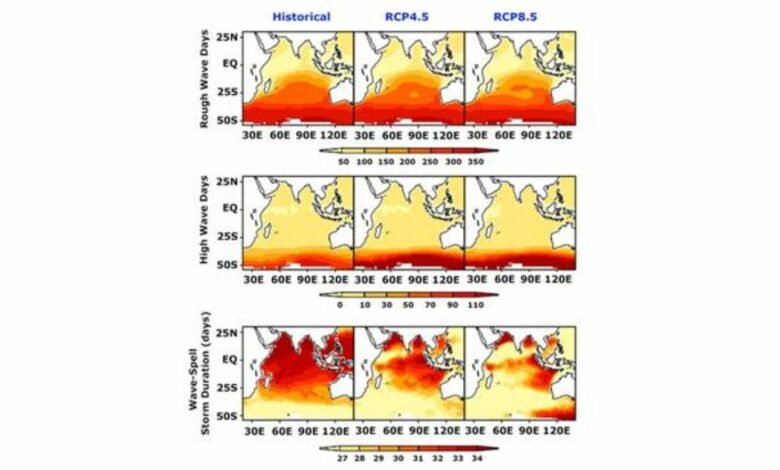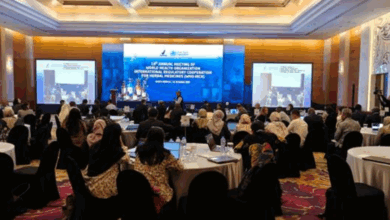Climate change likely to increase rough wave days in the Indian Ocean, northern sector of the Arabian Sea, and central Bay of Bengal

A recent study of extreme wave events shows that the Indian Ocean, the northern sector of the Arabian Sea, and the central Bay of Bengal are likely to experience an increase in rough wave days in the near future. It could help timely warning and planning to prevent major impacts on life and property, especially in coastal areas.
In a changing climate, extreme wave events that have been recorded quite frequently in recent times can pose a tremendous impact on the livelihoods of the coastal population, infrastructure, and ocean-related activities. Observed variability and changes in extreme wave events, along with shifting storm intensity and tracks, can play a crucial role in shoreline changes, erosion rates, flooding episodes, and other related coastal hazards. Extreme waves due to climate change and its consequences continue to emerge at both regional and global scales. Hence, a better understanding of the future projected changes in the amplitude of high-frequency extreme wave events is necessary for timely warning and coastal planning and management.
A team of scientists from the Department of Applied Sciences, National Institute of Technology Delhi; Indian Institute of Technology Kharagpur; and Indian National Centre for Ocean Information Services, Hyderabad, projected the likely future changes in extreme wave height indices over the Indian Ocean. Their research published in the journal ‘Climate Dynamics’, Springer recently used COWCLIP2.0 datasets’ to show that large-scale distribution in future wave climate can vary significantly from the present.
Future projections by the scientists Divya Sardana and Prashant Kumar from the Department of Applied Sciences, NIT Delhi, Prasad K. Bhaskaran from the Department of Ocean Engineering & Naval Architecture, IIT Kharagpur, and T. M. Balakrishnan Nair from ESSO-INCOIS Hyderabad indicate that under the climate scenario RCP4.5 (medium representative concentration pathway of greenhouse gases), the regions over eastern tropical Indian Ocean, northern sector of Arabian Sea, and central Bay of Bengal showed a strong positive increase in rough wave days.
However, under a high-emission scenario corresponding to RCP8.5, a decreasing trend in rough wave days is likely over most of the regions in the Indian Ocean, with an exception for regions in the north Arabian Sea and extra-tropical regions beyond 48° S in the Southern Indian Ocean sector.
Changes in high wave days are projected to intensify over the South Indian Ocean under both RCP 4.5 and 8.5 scenarios, and the wave-spell-storm duration is found to strengthen over the northern Arabian Sea and Bay of Bengal, southeast Indian Ocean and South Indian Ocean under RCP8.5 forcing scenario.
The study indicates that projected changes in the amplitude of high-frequency extreme wave events in the Southern hemisphere are driven by changes in a sea-level pressure gradient that is consistent with the projections of SAM (Southern Annular Mode) for the twenty-first century period.
The research supported by the Science Research and Engineering Board (SERB), an attached institution of the Department of Science & Technology (DST), Government of India, can be immensely useful to policymakers and decision-making authorities for both short and long-term planning that can benefit the coastal population.
Publication link: DOI: 10.1007/s00382-022-06579-5
Disclaimer: This is an official press release by PIB.








